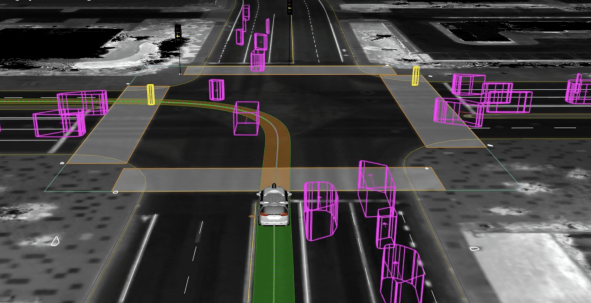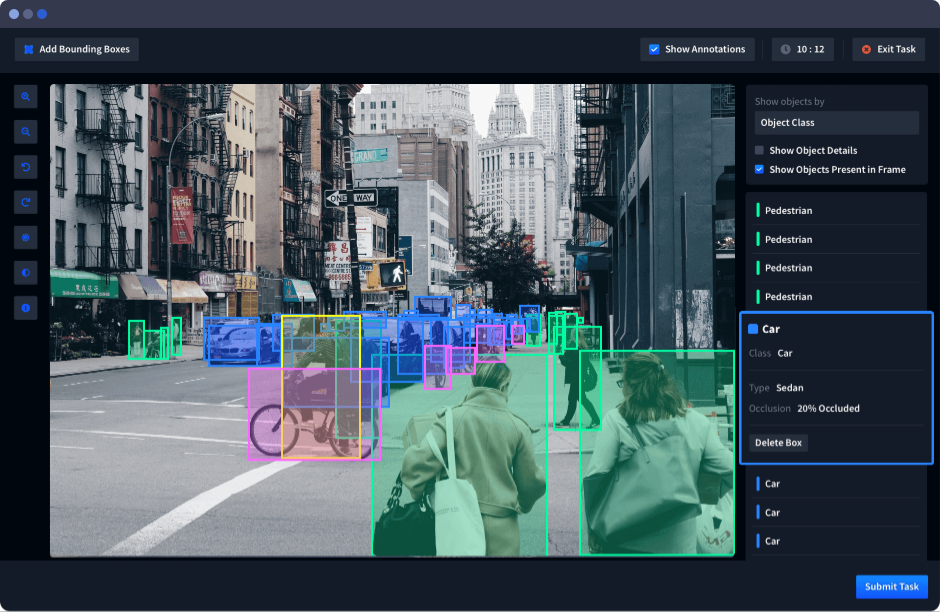Estimated Read Time: 5 Mins
In this ever-evolving era, artificial intelligence and machine learning are experiencing rapid advancements. Visual synthetic data technology is a revolutionary breakthrough that opens doors to various new possibilities. In this article, we will delve deeper into the extraordinary potential of visual synthetic data and its profound impact on the artificial intelligence landscape.
1. Accelerating Model Development and Testing

The ability of artificial intelligence models to perform reliably in various real-world scenarios is crucial. Visual synthetic data enables the creation of difficult and varied situations, providing the necessary training for robust models. From complex environments to intricate behavioural patterns, synthetic data ensures models are prepared to face diverse situations.
2. Enhancing Model Robustness in Various Scenarios

The ability of artificial intelligence models to perform reliably in various real-world scenarios is crucial. Visual synthetic data enables the creation of difficult and varied situations, providing the necessary training for robust models. From complex environments to intricate behavioural patterns, synthetic data ensures models are prepared to face diverse situations.
3. Ensuring Ethical Compliance and Privacy

Visual synthetic data provides a fast track to develop and test machine learning models. By generating diverse datasets tailored to specific needs, this technology speeds up the innovation and adaptation process. This acceleration is invaluable in staying competitive in the highly competitive market of artificial intelligence.
4.Driving Cost-Efficient Innovation
Visual synthetic data levels the playing field, making innovation accessible to businesses of various scales. Its cost-reducing ability allows startups and small companies to engage in artificial intelligence research without the prohibitive costs typically associated with acquiring real-world data. This democratisation of resources accelerates progress and innovation.
5.Building Sustainable Practices
Real-world data collection often has environmental impacts. Visual synthetic data offers a sustainable alternative, reducing the carbon footprint associated with extensive data collection. By promoting eco-friendly practices, this technology merges artificial intelligence research with broader environmental sustainability goals.
6.Facilitating Seamless Integration with Artificial Intelligence Tools
Visual synthetic data can smoothly integrate into artificial intelligence workflows. Its adaptability and compatibility with various machine learning and computer vision tools make it a highly flexible asset. Researchers and developers can easily incorporate synthetic data into their experiments, enhancing the efficiency and accuracy of their artificial intelligence models.
7.Improving Security and Reliability of Security Systems
Visual synthetic data plays a crucial role in enhancing the security of surveillance and security systems. By creating simulations of emergency situations, hacking incidents, or security breaches, this technology enables comprehensive testing of security systems. This allows the development of more robust and responsive security technology to counter rapidly evolving threats.
8.Optimizing Manufacturing Processes and Product Design
In the manufacturing industry, visual synthetic data is used to optimize production processes and design new products. By creating diverse production environment simulations, engineers can test production line efficiency, identify potential defects, and design more innovative products. This leads to cost savings in production and the development of technologically superior products.
9.Training Navigation Systems and Autonomous Vehicles
In the development of autonomous vehicles and navigation systems, visual synthetic data is used to train object recognition algorithms, route planning, and responses to different road conditions. By creating traffic simulations and various weather conditions, this technology allows autonomous vehicles and navigation systems to better handle real-world challenges, enhancing transportation safety and efficiency.
10.Developing Virtual Reality and Augmented Reality Applications
Visual synthetic data serves as a crucial foundation in the development of virtual reality (VR) and augmented reality (AR) applications. By creating realistic simulation environments, users can experience deeper and more immersive VR and AR experiences. This opens up new opportunities in the gaming, education, and training industries, creating thrilling and educational experiences for users.
11.Supporting Scientific and Healthcare Research
In scientific and medical research, visual synthetic data is used to create simulation models for anatomy research, organ movement, and biological reactions. This enables researchers and doctors to test hypotheses, design therapies, and train medical skills with minimal risk to patients. By harnessing visual synthetic data, advances in research and treatment can be achieved more quickly and efficiently.
12.Driving Artificial Intelligence Innovation with Visual Synthetic Data
The transformative potential of visual synthetic data is undeniable. By accelerating model development, ensuring ethical compliance, and promoting sustainability, this technology is changing the way we approach artificial intelligence research. Its cost-efficiency and flexibility make advanced artificial intelligence capabilities accessible to all, speeding up innovation and driving progress. As we explore the future of artificial intelligence, visual synthetic data stands as a driving force propelling us toward new boundaries of innovation and discovery.
Therefore, visual synthetic data is not just an additional tool in the artificial intelligence development toolbox but a foundational shift towards a more efficient, ethical, and sustainable paradigm. In this increasingly interconnected and complex world, this technology opens doors to innovative solutions that can bring real benefits to society and its surrounding environment. By continuously tapping into the potential of visual synthetic data, we can usher in a positive revolution, creating a bright and inclusive future for artificial intelligence for everyone.

